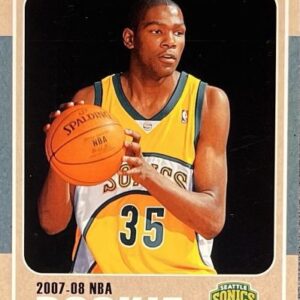In a world where trading cards tend to fade into the trivia of nostalgia and forgotten collectibles, there stands a singular card so definitive that it defies the passage of time, like a lighthouse amidst the fog of mundane memorabilia. This beacon is none other than Tom Brady’s 2000 Bowman Chrome #236 rookie card. It began its life as a humble inclusion in early 2000 postal boxes, only to be heralded later as the veritable overlord of modern football card valuation. It’s not just a piece of cardboard, but a shining artifact that both dealers and collectors wield like a stylish cudgel to define market trends and player value alike.
Brady’s battlefield is littered with rivals succumbing to the wear of time, but this particular card shines on. Its simplicity is its armor—a straightforward design, showing Brady in his early New England Patriots glory. There’s no pretense, no unnecessary sparkle; just an image captured in pristine chromium that invigorates and captures any collector’s gaze as if they happened upon it as the opening card in a children’s fairytale. It’s the quintessential rookie card you’d immortalize within a tasteful frame while cozy at home.
This isn’t just pretty to look at; there’s a method to its captivating powers. In the financial corridors of trading card enthusiasts, the 2000 Bowman Chrome’s pricing symphony sings a harmonious tune, right around the high frequency of $10,000. But fear not, exciting treble clefs abound when the bidding stakes grow into feverish clashes, occasionally crescendoing to a dramatic $14,000. Card Ladder’s meticulous documentation speaks of a steady band oscillating slightly above the $10,000 mark, each card transacted a node remapping this dynamic marketplace, confirmed by the latest happenings on bustling B2B ventures such as eBay.
Yet just as a card’s worth reveals itself through the lifeblood of an auctioneer’s hammer, the deeper market truths unfurl within the vast archives of PSA’s auction pages. A recent June eBay listing, for example, saw a PSA 10 glide elegantly over the $8,000 threshold, a serene thoroughbred within a cast of thousands of recorded results across multiple grades. This liquidity showcases not just how active the market is, but also how accessible this remarkable card remains to a diligent collector’s thirst.
One must love a sobering glance at population data. If you’re chasing a 10-grade slice of gridiron glory, PSA reports an elite tally of over 1,200 tens—enough to maintain frequent trading interest, but still sufficiently rare so that each auction involves that thrilling doctrine of timing and visual appeal. It becomes a Serengeti of divided interests: should the collector pursue a John Hunter-worthy perfect PSA 10, or a respected PSA 9, a card still worthy—displayed proudly on any collector’s sanctuary?
Although the paper Bowman is comfortably adjacent, like a beloved but quieter cousin at a grand family reunion, it’s the Chrome that demands center stage by striking the perfect balance among recognition, consistent market presence, and enduring scarcity. Even outside the geeky circle of hardcore collectors, its sheen is widely known—an instant touchdown of cultural recognition as accessible at a memorabilia fair as it is by a casual enthusiast seasoned in the wheelings and dealings of card dealer negotiations.
Condition nuances generate an intriguing stage play too; centering and surface integrity call for an eye as sharp as an antique appraiser’s. As very much the embodiment of its era, the gap between a PSA 9 and a PSA 10 involves more than a few decimal points—it’s a discernible chasm both financially and psychologically, signaling a collector tuned into every detail.
Remember, eBay’s evening auctions could provide that golden window of purchase opportunity you were craving, with outcomes hovering tantalizingly close to that coveted $10,000 mark—however, prepare for pleasant surprises when fervent competitors inevitably drive the stakes aloft to 12k, or, in passionate dueling moments, the $14,000 crown.
This often-traded card serves more than just as a collector’s piece; it’s a bridge weaving set builders, player collectors, investors, and passionate football nostalgists alike. It unifies varied collector types who seek, not just a keepsake, but a touchstone of enduring football greatness.
Indeed, some daring enthusiasts have successfully pursued one of these relics in the wild through the Galaxy Rip Packs’ mercurial whirl—though these whales are a rarity. Yet the chase itself, a rush of adrenaline mirroring a rookie’s first touchdown, keeps the landscape lively.
The decision then posits itself to the would-be collector: do you aspire to the heralded prestige of a PSA 10 or admire a understated PSA 9? Both have ample market logistics backing them, with steady comparatives that inspire confidence in every transaction you might entertain.
Ultimately, whether you pine after that storied 2000 Bowman Chrome from afar or tenderly cradle one as your most prized possession, it embodies a modern football odyssey that remains eternally relevant. It’s the collectible that, like Brady himself—unshaken at his core by time—never leaves the tableau of discourse, forever nearing the end zone of a collector’s desires.





